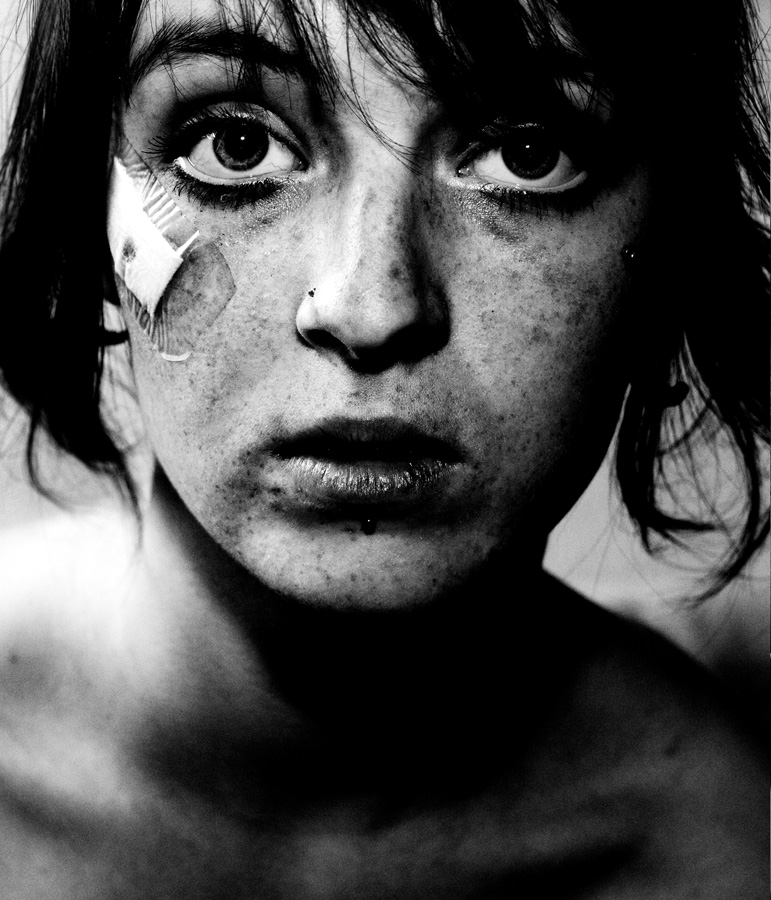
‘Six degrees of Copenhagen’ by Jens Juul (Denmark). Winner, International Photographer of the Year 2016.
” Taking its point of departure in the idea that every person on Earth is connected in the sixth degree, this series of photos depicts human connections through the city of Copenhagen. The set up is that Jens Juul portray random people that I engage with in the streets, and that these chance meetings end up with me taking highly personal photos of these people, who then each send me on to another person in their network, who I can portray, who then gives me the name of another person…”
Danish photographer Jens Juul has taken home the top prize of the 2016 International Photographer of the Year (IPOTY) Awards. Selected from 3,870 entries, Juul won the competition with his black and white series Six Degrees of Copenhagen.
The wide range of categories and subcategories for professional and amateur photographers shows the breadth and depth of the photography community. Familiar names like Mattia Passarini and Chris Forsyth are just some of the winners of the 2016 competition.
Judged on creativity, artistic merit, subject, and style, each winner was carefully selected by an expert jury of high-profile photographers. From hard-hitting editorial work to fine art photography, IPOTY displays the versatility of what is possible from behind the lens.
Here’s a look at selected winning photographs from the 2016 International Photographer of the Year Awards.
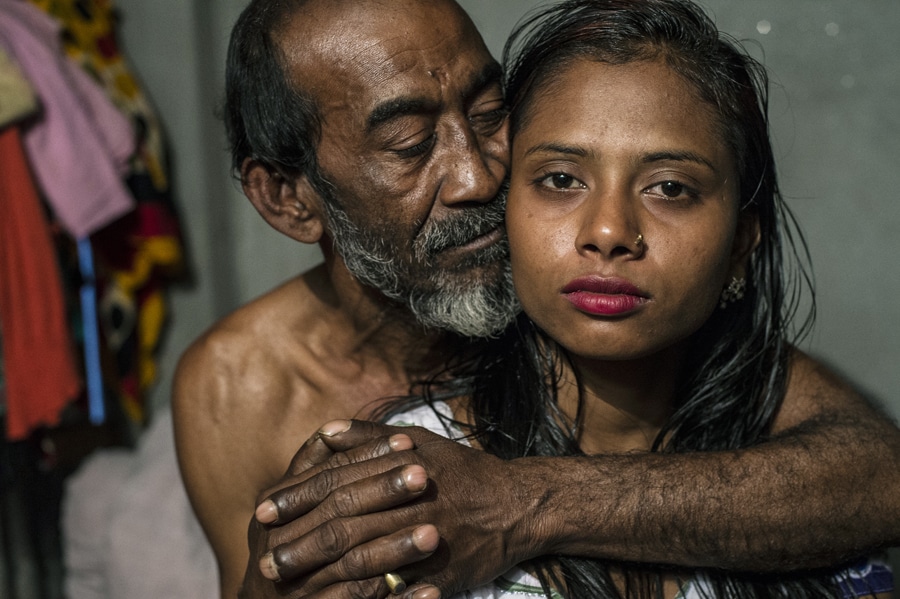
‘The Longings of the Others’ by Sandra Hoyn (Germany). Winner, International Editorial Photographer of the Year 2016.
“Bangladesh is one of the few Muslim countries where prostitution is legal. The Kandapara brothel in the district of Tangail is the oldest and one of the largest in the country – it has existed for some 200 years. Here live and work more than 700 sex workers with their children and their madams. The brothel district is surrounded by a two-meter wall. In the narrow streets, there are food stalls, tea shops, and street vendors. Their customers are policemen, politicians, factory workers, groups of teenage boys. Some are looking just for sex, but some also for love and company of a woman.”
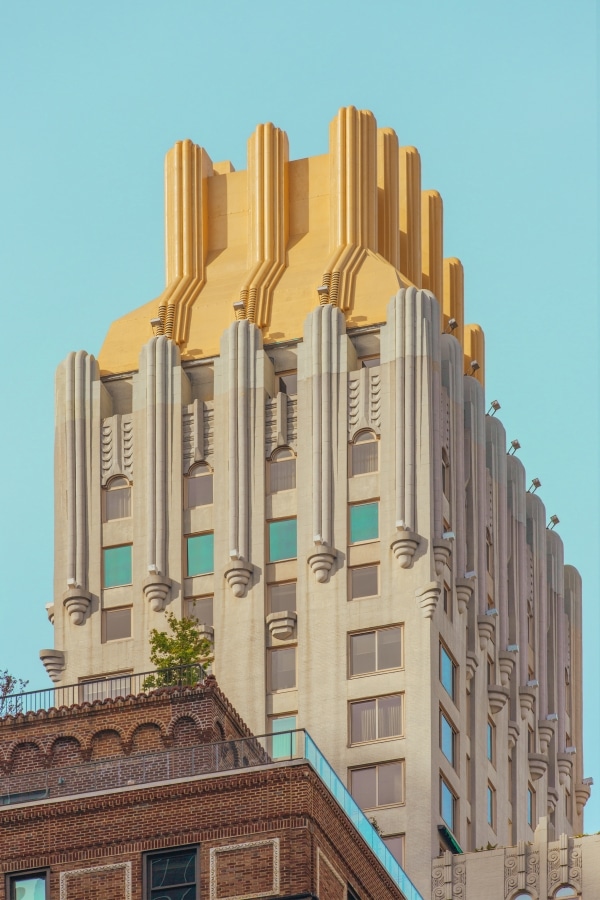
‘Chroma II’ by Ben Thomas (Australia). Winner, International Architectural Photographer of the Year 2016.
“Ben’s work has centered around the cities and urban spaces that we live in. Most recently Ben has developed his latest series ‘Chroma’ (2015) and ‘Chroma II’ (2016), a further deconstruction of cities and urban areas with a primary focus on the use of color and flatness that poses questions of how society defines the places in which we live.”

‘Firebird’ by Warren Keelan (Australia). Second place, Nature: Seascapes (Professional).
“The ocean does some unusual but beautiful things! This is a wave captured at 1/20 sec handheld while swimming the ocean on sunrise.”
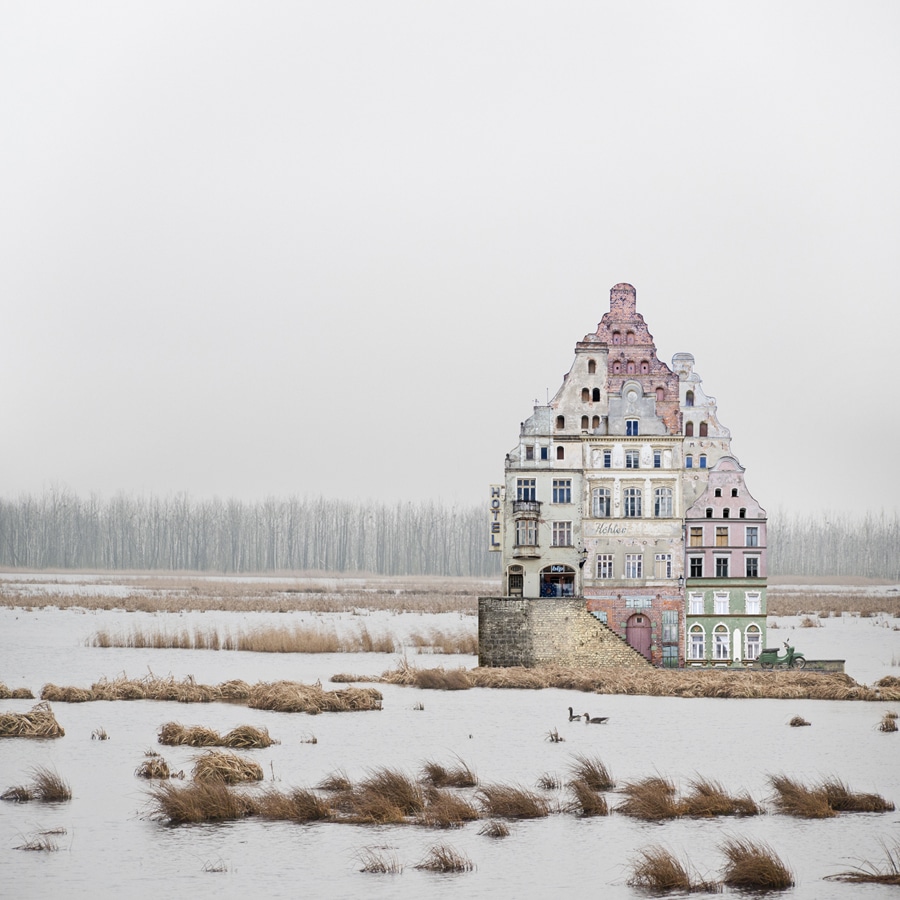
‘Houses’ by Matthias Jung (Germany). First place, Fine Art: Digital Manipulation (Professional).
“Collages have fascinated me ever since I was a child. It all began in the photo lab of my father. With scissors and glue, the first fantastic buildings were made. Basically, I don’t do anything differently nowadays. I cut apart my photos and make them into new shapes. The composition of the individual elements correlates to a logic, as if in a dream. Basically, dreams are collages. In order for my work to function properly, I also have to consider design rules. Thus, the relationship between order/disorder and homogeneity/diversity must agree. A building has to first be stable and credible before I can add some ‘disorder’, to let it fly for example. One such disorder refers to another, only hinting at reality. I weave, so to speak, spiritual realities into everyday things.”
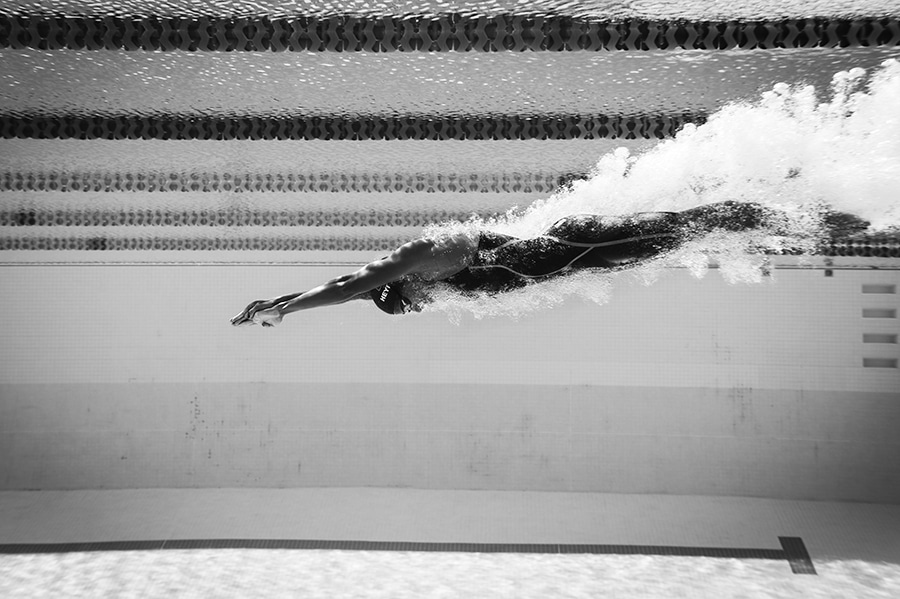
‘Rebecca Heyliger’ by Karen Yeomans (United Kingdom). Second place, Editorial: Sports (Professional).
“A series of images of Bermudian 2016 Olympic swimmer, Rebecca Heyliger. Shot at Bermuda national stadium during a training session.”
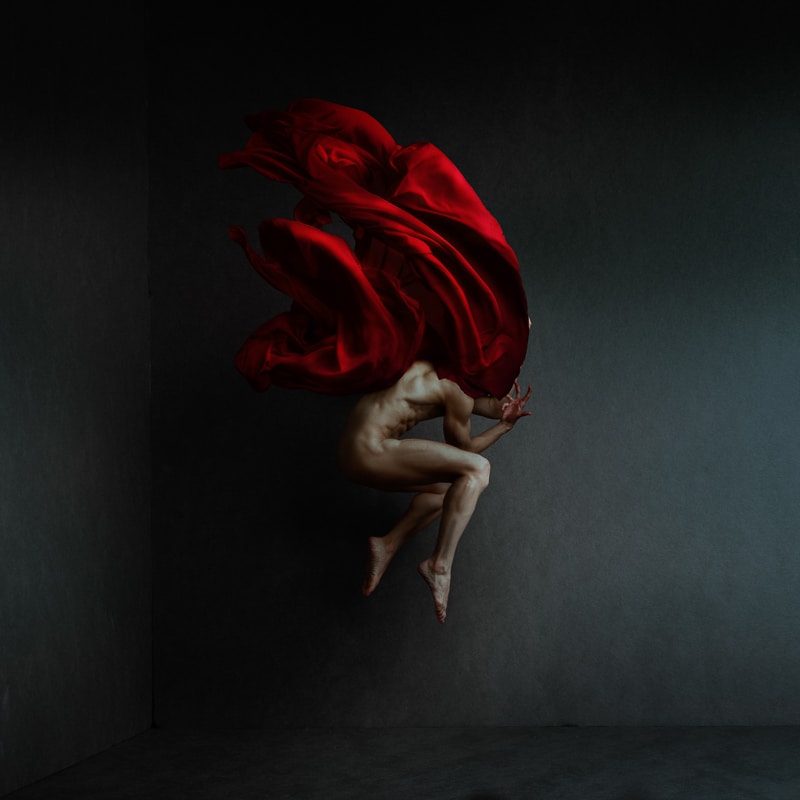
‘Forbidden Passion’ by William Ye (Canada). Third place, Fine Art: Nudes (Amateur).
“When I was young, I was mocked for being gay. If that experience that taught me anything, it is to conceal my sexuality. I lived in the closet for many years, until I finally couldn’t hold it together. I secretly went on dating apps, hoping my life would get better from there. I was gravely wrong. The gay world offers one of the most racist environments you can find in this planet. Being Asian is doomed to be unattractive. Nothing matters, not personality, not knowledge, nothing. I grew more and more frustrated over time, frustration on so many levels. Frustration brings forth depression. From time to time, I wonder what my life will be like when I am old. I will have no family, no children, no loved one, no one to love. I feel so lonely, like being trapped in a dark room with tons of frustration, anger, and passion that cannot be released. The red in the images symbolizes passion, anger, and blood. The shapes are inspired by flowers, blood, organs and other organic objects.”
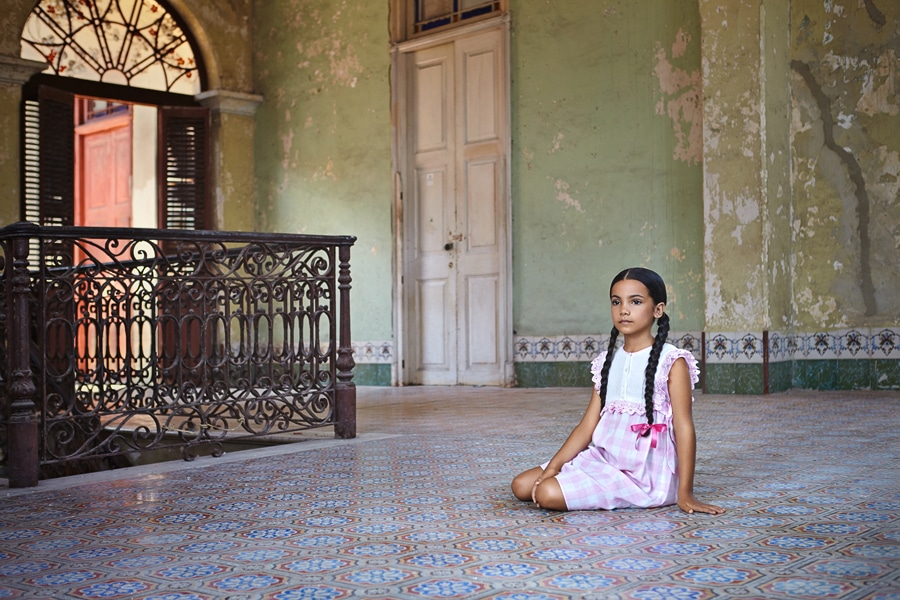
‘Havana Life’ by Gillian Hyland. First place, People: Children (Professional).
“My creative process has always involved narratives as the basis of the photo, my aim has been to capture an emotional moment in a way that pulls the viewer in and drives them to feel and question what they are seeing. Up until recently I’ve drawn inspiration from my own personal experiences but earlier this year I decided to travel to Cuba to do a photo series. This series of images are little windows into Havana, and capture just a drop of the spirit you feel from the city and its people. Each picture is a story influenced by who I met and what I saw, I’ve chosen the images with children as their innocence shone through whilst I was there.”
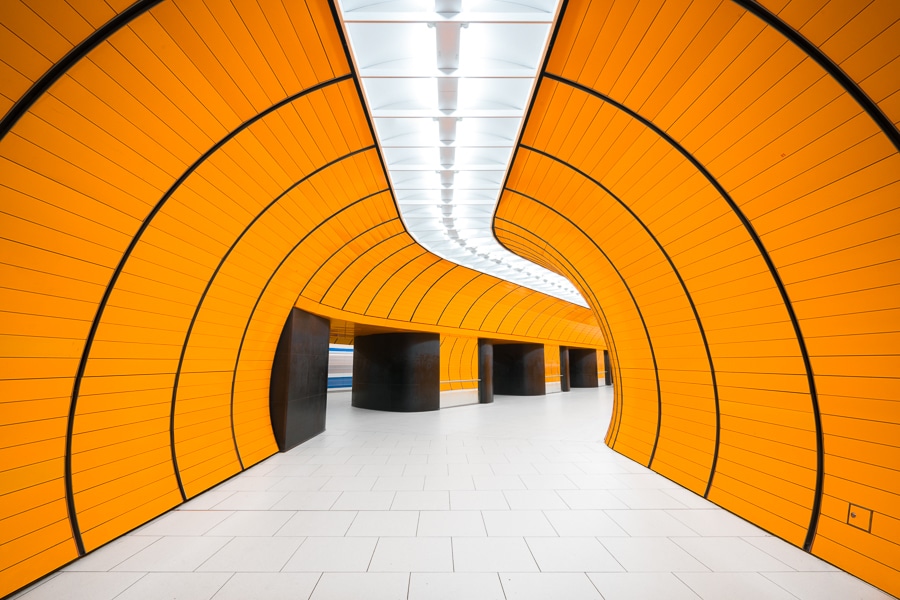
‘The Metro Project’ by Chris Forsyth. First Place, Architecture: Interior (Professional).
“The Metro Project is an on-going series exploring the architecture, art, and design of metro stations around the world.”
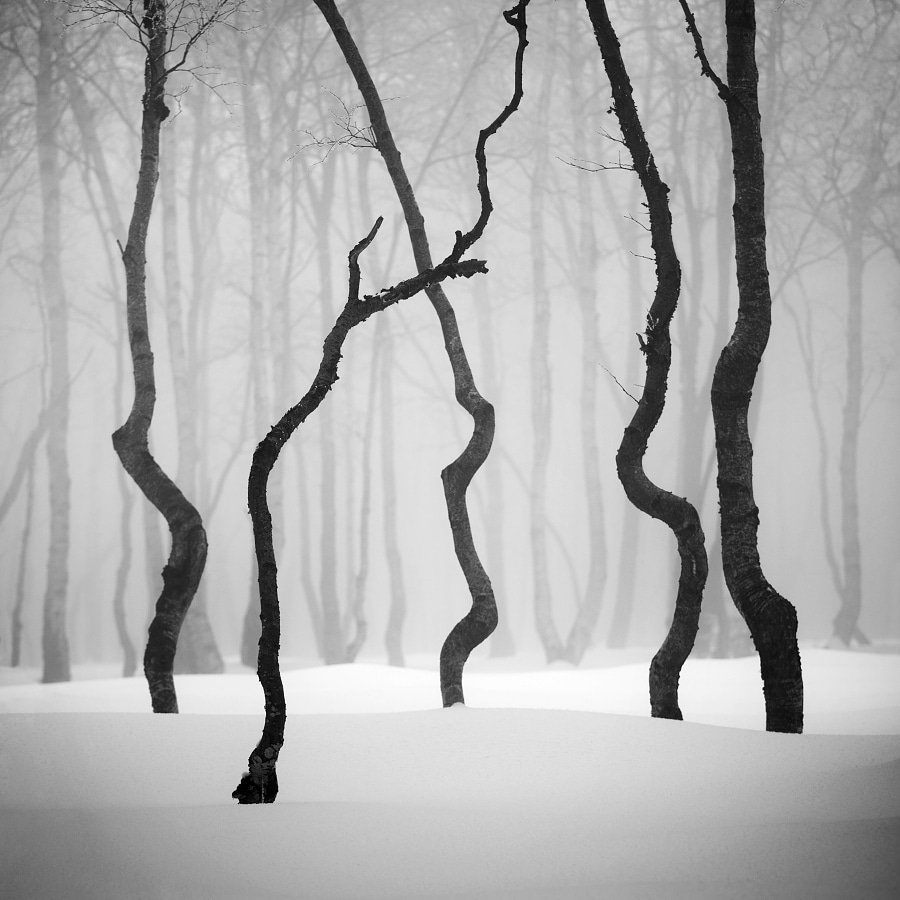
‘Dancing Trees’ by Daniel Řeřicha (Czech Republic). First place, Nature: Trees (Amateur).
“Photo of winter Ore Mountains.”
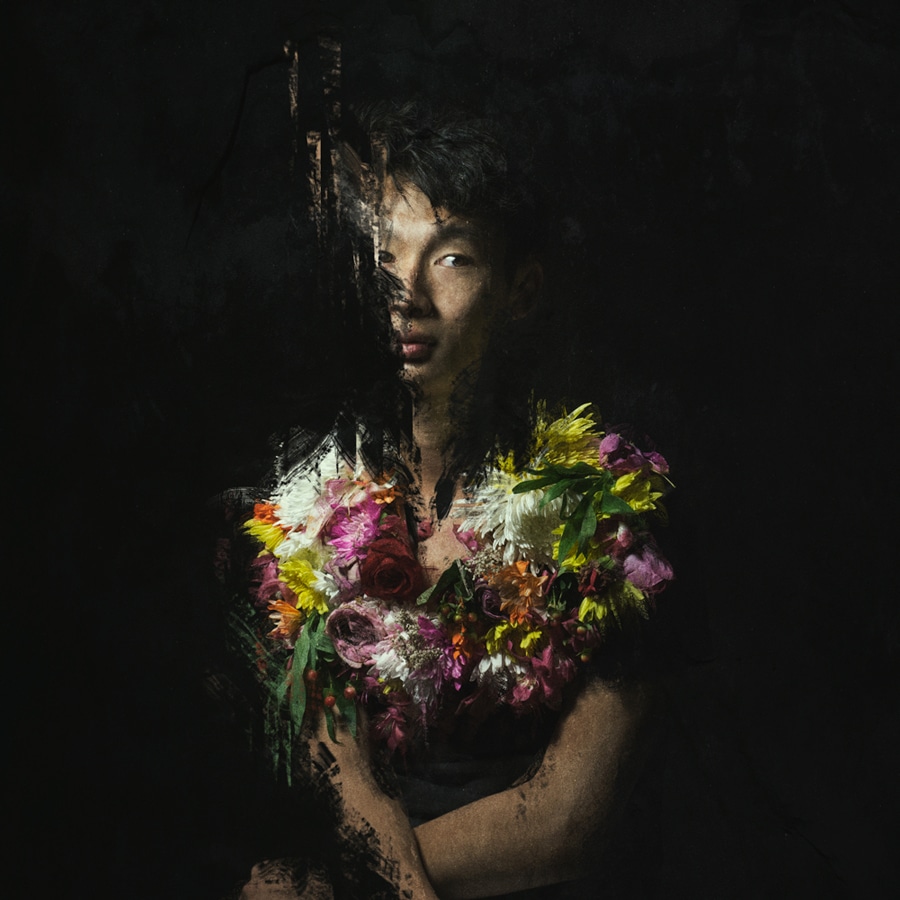
‘Botánica’ by Carlos Bracho (Panama). Second place, Fine Art: Conceptual (Amateur).
“Botánica is a series which aims to explore and place together the study of plants with people’s portraits. From morphology to the interaction with other living beings, this series aims to explore and challenge my creative side, limited by the space of my own bedroom, one light, and a black fabric, I have to figure what’s next for making a portrait that fills me with joy.”

‘Coastal Geometries’ by Tugo Cheng (Hong Kong). Winner, International Fine Art Discovery of the Year 2016.
“The Coastal Geometries series captured the abstract patterns of the aquaculture activities of Fujian province in the southeast coast of China. While bamboo rods are erected for multi-purposes such as growing shellfishes, drying seaweeds and hanging fishing nets, they form unique geometries unintentionally and turn the seascape into an array of minimalist graphics.”
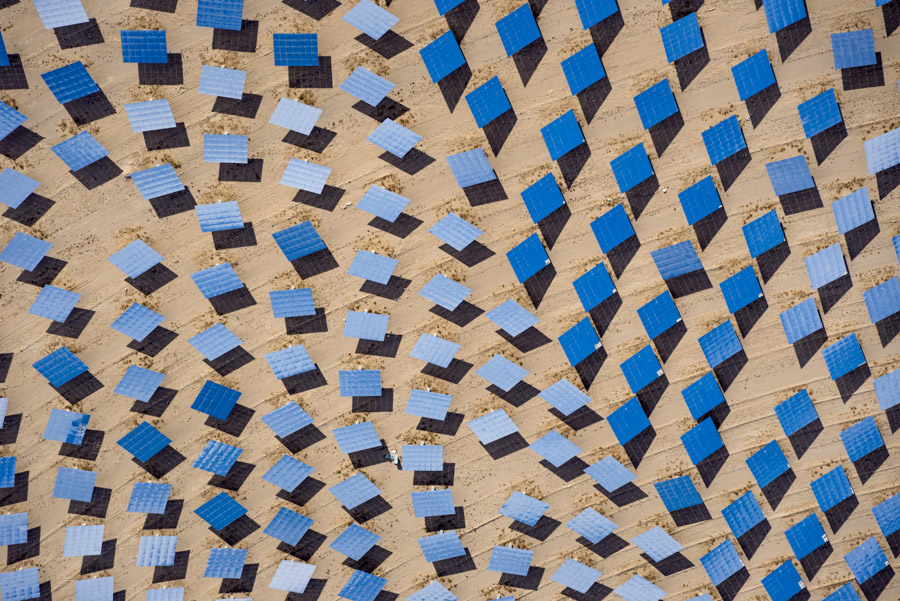
‘Crescent Dunes Solar Energy Project’ by Jamey Stillings (United States). First place, Editorial: Environmental (Professional).
“Aerial photography of Crescent Dunes Solar Energy Project, located near Tonopah, Nevada. Crescent Dunes Solar is Solar Reserve’s 110MW concentrated solar thermal power plant with molten salt storage. Crescent Dunes has a ten-hour molten salt storage capacity that allows the plant to collect the thermal energy of the sun during the day, then create electricity as the grid demands it. This is part of a multi-year project called Changing Perspectives that is examining renewable energy development around the world.”
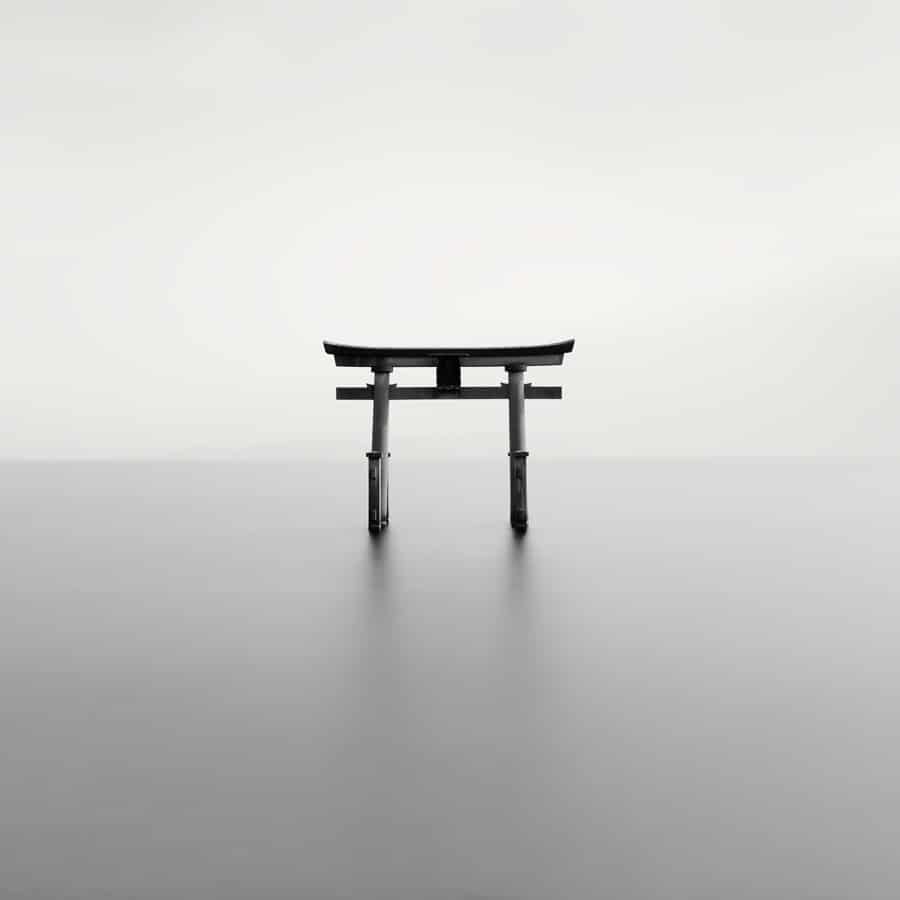
‘Coasts’ by Olivier Robert (France). Third place, Nature: Seascapes (Professional).
“This project depicts a personal approach about the aesthetically pleasing value of the objects built or abandoned on the coasts and the way they pertain to the landscapes. Furthermore, it tries to give a minimalist description of the natural formations. Long exposures afford me a subjective way of describing my perception of these architectural or natural beauties. This project started 20 years ago alongside the Leman Lake (Switzerland). It brought me in many European countries and continues on the coasts of Japan for years.”

‘Passengers’ by Cesar Dezfuli (Spain). Second place, People: Portrait (Professional).
“On 1st August 2016, 118 people were rescued from a rubber boat drifting in the Mediterranean Sea, 20 nautical miles far from the Libyan coast. These portraits, taken minutes after the end of the rescue, once every person was safe and on board Iuventa, the rescue vessel that took care of their rescue, are an attempt to put face and name to the numbers. A search for the humanization of this tragedy. They are the protagonist and passengers of that rescue, that one more rescue, that took place in the Mediterranean Sea on 1st August 2016.”
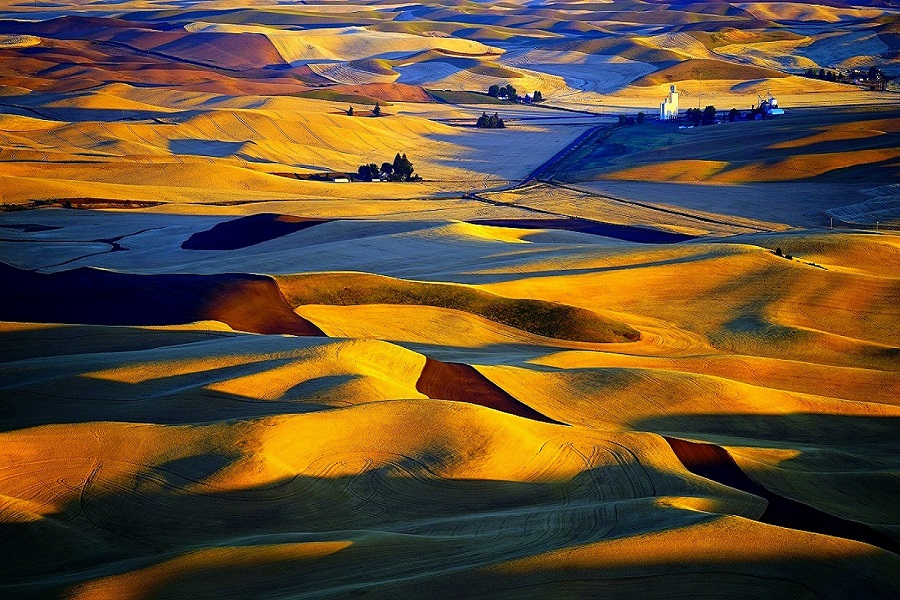
‘The Golden Fields’ by Viral Padiya (United States). Second place, Nature: Aerial (Professional).
“Rolling hills of the Palouse region is the most serene, scenic landscape and one of the wonders of nature of Washington state of United States. Over the course of a year, the color and textures of the Palouse hills change the appearance of the fields dramatically. “
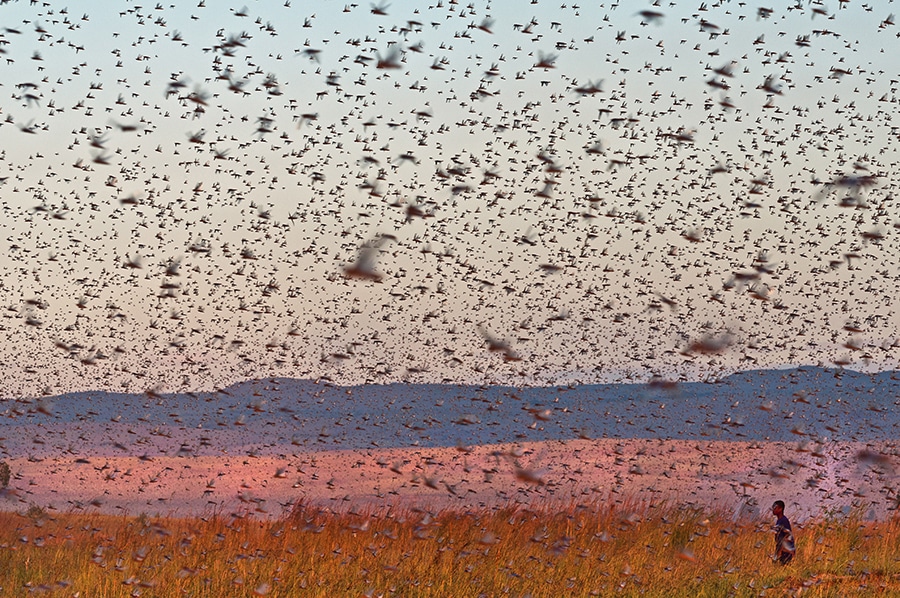
‘Locusts & Men’ by Michele Martinelli. First place, People: Travel (Amateur).
“Oppression, interaction, collaboration.
In the life cycle of nature nothing is lost, but the coexistence of different species is sometimes difficult. In Madagascar periodically returns the archaic antagonism between man and migratory locust, in a circle of life where the two species look for space and food for their survival. Accomplice deforestation, cropland are objective of swarms of locusts flying covering billions skies and vegetation, destroying agricultural production, human labor, grazing cattle, with the risk of causing serious famine to the population.”
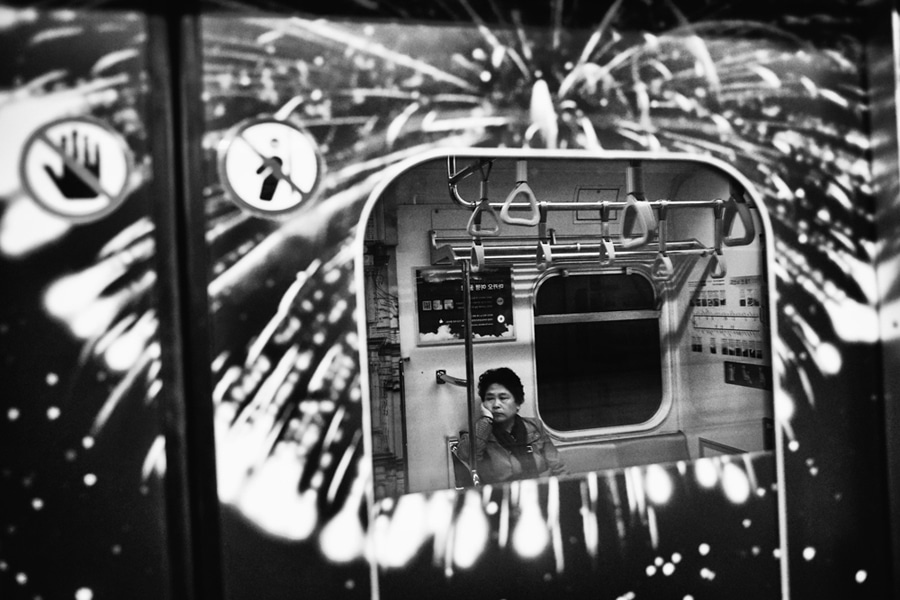
‘Reflections Inside The Seoul Metro’ by Argus Paul Estabrook (Korea, Republic of). First place, People: Street (Amateur).
“Photographing the Seoul Metro is a time of reflection for me. Although I was born in South Korea, I was raised in a rural, predominantly white area of the United States that culturally distanced me from my mother’s country. Since moving to Seoul, I’ve made a habit of haunting the metro. I can spend days jumping from line to line, taking in as much as I can. I could say it’s because I want to go somewhere new but that isn’t the full truth; I’m exactly where I want to be. The metro is where the “real” Seoul congregates: true lives that won’t be portrayed in tourism ads or K-pop songs. Travelers on our own journeys, we pass and disappear in a blink of an eye. Here we are all away from home.”

‘Yalimo’ by Mattia Passarini. Second place, People: Travel (Professional).
“Yali who live in the West Papua Indonesia, is a major tribal group living in a very isolated and inaccessible area of Jayawiijaya mountains east of Baliem Valley, which is also known as the Yalimo. I went hiking for several weeks passing through many small villages until I found the very remote and still very traditional Yali community. I had visited many tribal groups and remote people in the past years, but Yali people are one of the most unique.”
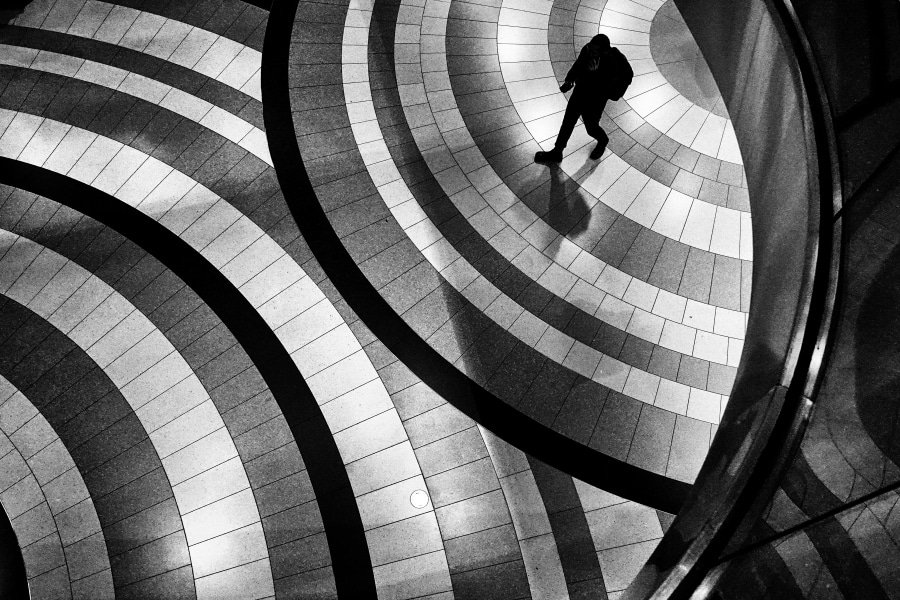
‘Space and Geometry’ by Lawrence Cheung (Hong Kong). First place, Architecture: Interior (Amateur).
“Elliott Erwitt once said, ‘To me, photography is an art of observation. It’s about finding something interesting in an ordinary place…’ I believe it depicts an important mission of a photographer. ‘Space and Geometry’ is my architecture series to investigate symmetry and geometry in the urban landscape. I am trying to examine the relationship between space, architecture, and humans. Does architecture define the space we live in? Why do we have geometry in architecture / space? Does human factor play a part in defining space that we live in? “
International Photographer of the Year: Website | Facebook
